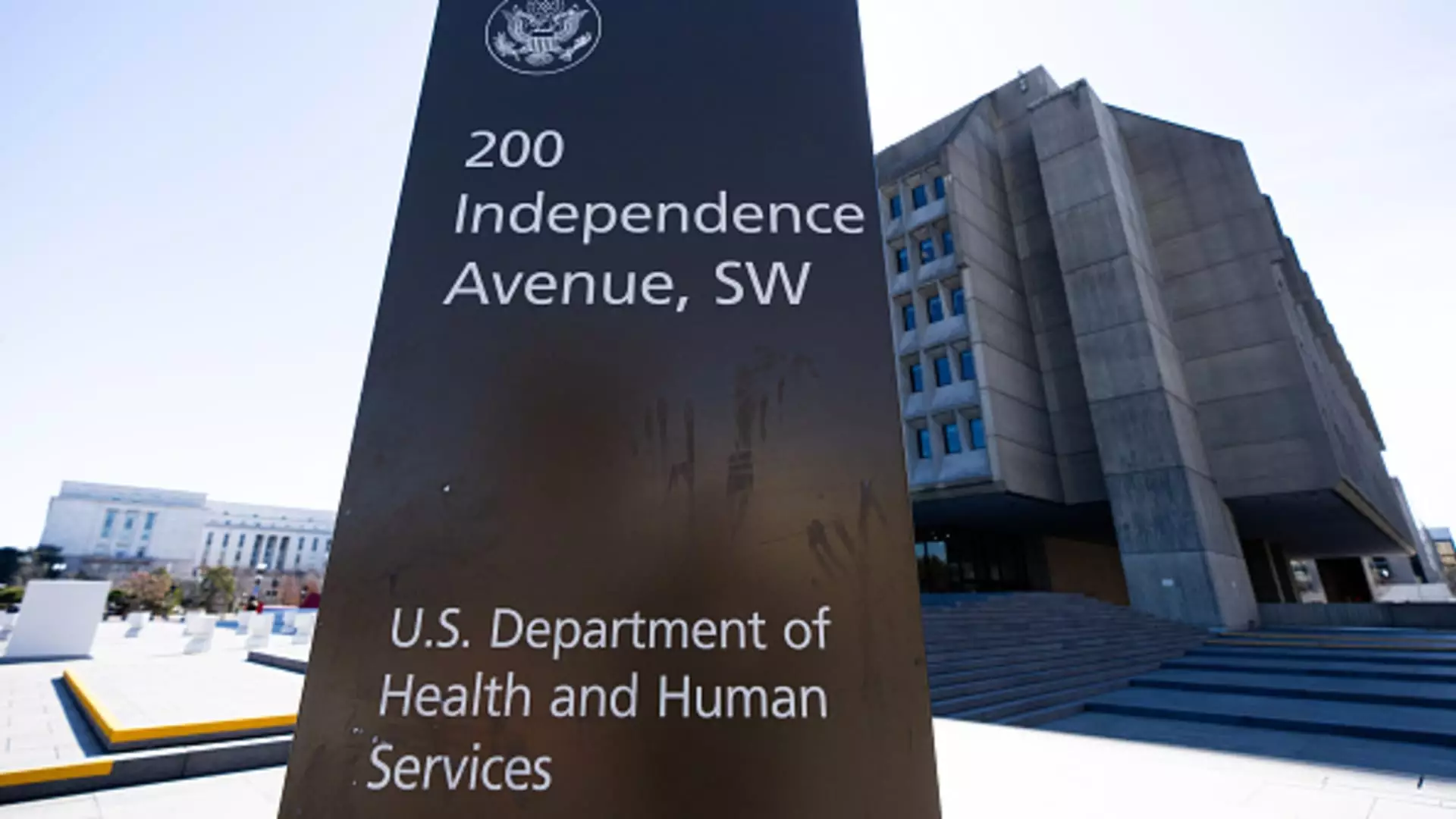In a shocking and deeply troubling move, the U.S. Department of Health and Human Services (HHS) has initiated a series of drastic layoffs that threaten to decimate the workforce charged with safeguarding public health across the nation. Following President Donald Trump’s recent decision to strip employees of their collective bargaining rights, HHS is set to dismiss up to 10,000 employees, leaving a potential gaping void in the very fabric of health services deemed essential for the American populace. The decision to pare down an already stretched workforce is not just misguided; it borders on reckless, particularly as we confront looming public health crises.
The scale of the layoffs is staggering. HHS has outlined cuts that will reduce its workforce from 82,000 to approximately 62,000, a staggering reduction of nearly 25%. Urban centers and rural communities alike will feel the consequences as those charged with monitoring health trends, conducting critical research, and responding to emergencies are unceremoniously cast aside. This action leads to an unsettling thought—how will the federal government manage the complexities of public health with a severely weakened backbone?
Redefining Public Health Administration
The announcement from Health Secretary Robert F. Kennedy Jr. about the restructuring of HHS raises a host of questions about the agency’s priorities. By consolidating essential functions into a new office named the Administration for a Healthy America, the administration appears to overlook the danger of centralizing such significant responsibility at a time when public health is already at risk. The sweeping cuts to departments that handle drug safety, disease prevention, and health insurance could easily backfire, leaving the public vulnerable when it is most crucial to have a well-resourced and responsive healthcare apparatus.
Senator Patty Murray powerfully articulated the existential threat posed by these changes, remarking that if the administration continues down this treacherous path, it might as well rename the department the “Department of Disease.” Such statements are not hyperbolic; they are an urgent call to recognize the tangible lives that hang in the balance of these sweeping budget cuts and staff reductions. With districts already grappling with challenges like the resurgence of measles, such a tone may not only resonate but also underscore the palpable fears felt by public health officials nationwide.
The Collateral Damage of Historical Neglect
In an era where public health crises seem to emerge with alarming frequency—be it global pandemics or localized outbreaks—HHS decisions to retract over $11 billion in COVID-19-related funding represent a callous disregard for the ongoing needs of state and local health departments. These losses are not merely numbers on a budgetary ledger; they translate into real consequences for those on the front lines of healthcare. Hundreds of jobs have already evaporated, giving lie to the administration’s claims of doing “more with less.”
These cuts perpetuate a downward spiral of government efficacy at a time when leadership and strong institutions are necessary. How do you justify reducing the workforce of the Centers for Disease Control (CDC), an agency that closely monitors outbreaks and collaborates with public health officials? The decision is particularly baffling when taking into account the historical neglect and underfunding that have undermined these crucial services. The erosion of capacity in institutions inherently designed to protect public health should have raised alarms among both party lines, yet the silence is deafening.
Attacks on Worker Rights
The move to dismantle collective bargaining rights further exacerbates the already precarious situation for health services. The hasty executive order signed by President Trump strips countless federal employees, including those in health agencies, of the union rights necessary to protect them in their workplaces. It is a deeply troubling trend, one that increasingly empowers those at the top while constraining the rights of dedicated workers who strive daily to serve the public interest.
As voices of dissent rise within the Democratic Party, the implications of these actions extend beyond individual workers—they could weaken health agencies fundamentally. Rep. Gerald Connolly voiced a stark truth when he pointed out that such moves would only empower political interests that prioritize dismantling government efficacy over the welfare of its citizens. The internal risk to American democracy should ignite a commitment among all who value civil service to resist this unprecedented assault.
The trajectory set forth by HHS and the Trump administration threatens not only the livelihood of dedicated employees but the very health and safety of Americans reliant on these services. The decision to proceed with such budgetary cuts and workforce reductions must be reexamined, lest we become a country where public health is an afterthought rather than a priority.


Leave a Reply